Crestor 20 mg side effects. Crestor Side Effects: Understanding Common and Serious Reactions to Rosuvastatin
What are the most common side effects of Crestor. How does Crestor affect muscles and kidneys. Can Crestor increase the risk of diabetes. What should patients know about potential liver damage from Crestor. How does Crestor compare to other statins in terms of side effects. What precautions should be taken when using Crestor.
Common Side Effects of Crestor: What to Expect
Crestor (rosuvastatin) is a widely prescribed statin medication used to treat high cholesterol. While it can be effective in managing cholesterol levels, it’s important for patients to be aware of potential side effects. The most frequently reported side effects of Crestor, occurring in at least 2% of patients during clinical trials, include:
- Headaches
- Abdominal pain
- Nausea
- Constipation
- Dizziness
- Muscle aches and pains
- Weakness
- Protein in urine
- Memory loss and confusion
While these side effects are generally considered mild, it’s crucial to discuss any persistent or concerning symptoms with your healthcare provider. They can help determine if the benefits of Crestor outweigh the risks in your individual case.

Muscle-Related Side Effects: A Closer Look at Myalgia and Myopathy
Muscle-related side effects are among the most common concerns for patients taking statins like Crestor. The risk of these effects increases in patients over 65 years old and those with kidney impairment. Additionally, certain medications can interact with Crestor to increase the likelihood of muscle problems.
Myalgia, or muscle pain, is the most frequently reported muscle-related side effect. However, a 2022 study published by the American College of Cardiology found that more than 90% of muscle complaints in statin users were not actually caused by the medication. This highlights the importance of proper evaluation and communication with your healthcare provider.
Understanding Myopathy and Rhabdomyolysis
Myopathy is a group of disorders affecting muscle fibers. In rare cases, statin use can lead to a severe form of muscle damage called rhabdomyolysis. This condition causes rapid breakdown of skeletal muscle tissue, releasing proteins like myoglobin into the bloodstream. Myoglobin can be harmful to the kidneys and may lead to kidney failure in severe cases.

How rare is rhabdomyolysis in statin users? According to Harvard Medical School, approximately 1 in 10,000 patients taking statins develop this severe muscle condition. While uncommon, it’s essential to be aware of the warning signs, which include muscle aches and dark-colored urine.
Crestor and Kidney Function: Potential Risks and Monitoring
The relationship between Crestor and kidney function is an important consideration for patients and healthcare providers. A 2005 study published in the American Heart Association journal Circulation found that patients taking Crestor were eight times more likely to develop renal failure or proteinuria (high levels of protein in the urine) compared to those taking certain other statins.
Why is monitoring kidney function important for Crestor users? The breakdown of muscle tissue in conditions like rhabdomyolysis can release substances that may damage the kidneys. Additionally, the presence of protein in the urine can be an early indicator of kidney problems. Regular monitoring of kidney function through blood and urine tests can help detect any potential issues early on.

Diabetes Risk: Examining the Link Between Crestor and Blood Sugar
Several studies have investigated the potential connection between statin use and an increased risk of developing Type 2 diabetes. The findings suggest that statins, including Crestor, may increase diabetes risk by 9% to 48%, depending on the study and population examined.
A large drug trial in 2008 focused specifically on Crestor, analyzing data from 18,000 patients. The results revealed a 27% increase in the risk of developing diabetes among Crestor users. Similarly, the Women’s Health Initiative conducted a study that found an even higher increased risk of 48% among women taking statins.
Does this mean patients should avoid Crestor due to diabetes concerns? Not necessarily. The decision to use Crestor or any statin should be based on a careful evaluation of individual risk factors and potential benefits. For many patients, the cardiovascular benefits of statins may outweigh the slightly increased risk of diabetes. However, it’s crucial to discuss these concerns with your healthcare provider and maintain regular monitoring of blood sugar levels while taking Crestor.

Liver Health and Crestor: Understanding the Potential Impact
Statins, including Crestor, can affect liver function by raising the levels of liver enzymes in some patients. While this elevation is often temporary and may not indicate serious liver damage, it’s essential to monitor liver function regularly when taking Crestor.
How does Crestor impact the liver? The medication is processed by the liver, which can lead to increased enzyme levels. In most cases, these elevations are mild and do not cause symptoms. However, in rare instances, more severe liver problems can occur.
To ensure patient safety, healthcare providers typically recommend liver function tests before starting Crestor and periodically during treatment. If you experience symptoms such as unusual fatigue, loss of appetite, right upper abdominal discomfort, dark urine, or yellowing of the skin or eyes, it’s crucial to seek medical attention promptly.
Cognitive Effects: Memory and Confusion Concerns with Crestor
Some patients taking Crestor have reported experiencing memory loss and confusion. While these cognitive effects are listed among the common side effects, their exact prevalence and mechanism are not fully understood.
:max_bytes(150000):strip_icc()/GettyImages-972352356-756659e877134848a57c4e8a7119cea1.jpg)
Are cognitive side effects a significant concern for Crestor users? The evidence regarding cognitive effects of statins is mixed. Some studies have suggested a potential link between statin use and cognitive decline, while others have found no significant association or even potential cognitive benefits.
If you experience any changes in cognitive function while taking Crestor, it’s important to discuss these symptoms with your healthcare provider. They can help determine if the changes are related to the medication or if other factors may be involved.
Comparing Crestor to Other Statins: Side Effect Profiles
When the U.S. Food and Drug Administration approved Crestor in 2003, it was initially believed that its side effect profile would be similar to other statins already on the market. However, subsequent data and studies have revealed some differences in the risk of certain side effects.
How does Crestor compare to other statins in terms of side effects? While all statins share similar potential side effects, some studies have suggested that Crestor may have a higher risk of certain adverse events, particularly muscle-related side effects and kidney problems. The 2005 study mentioned earlier found that Crestor users were eight times more likely to develop rhabdomyolysis, renal failure, or proteinuria compared to users of certain other statins.

It’s important to note that individual responses to statins can vary widely. The choice of statin should be based on a patient’s specific needs, risk factors, and tolerance. Your healthcare provider can help determine which statin is most appropriate for you based on your individual circumstances.
Precautions and Monitoring: Ensuring Safe Use of Crestor
Given the potential for side effects, proper precautions and monitoring are essential for patients taking Crestor. Here are some key steps to ensure safe use of the medication:
- Regular check-ups: Schedule regular appointments with your healthcare provider to monitor your cholesterol levels, liver function, and overall health.
- Blood tests: Undergo periodic blood tests to check liver enzymes, kidney function, and blood sugar levels.
- Report symptoms promptly: Inform your healthcare provider immediately if you experience muscle pain, weakness, or dark-colored urine.
- Medication interactions: Provide a complete list of all medications, supplements, and herbal products you’re taking to avoid potential interactions.
- Lifestyle modifications: Combine Crestor with a healthy diet and regular exercise for optimal cholesterol management.
- Pregnancy considerations: Crestor is contraindicated during pregnancy, so inform your healthcare provider if you become pregnant or plan to become pregnant while taking the medication.
By following these precautions and maintaining open communication with your healthcare provider, you can help minimize the risk of side effects and maximize the benefits of Crestor therapy.

Long-Term Use of Crestor: Balancing Benefits and Risks
For many patients, Crestor is prescribed as a long-term medication to manage cholesterol levels and reduce the risk of cardiovascular events. While the medication can be highly effective in this role, it’s important to consider the potential long-term effects and weigh them against the benefits.
What are the long-term benefits of Crestor use? Crestor has been shown to significantly reduce LDL cholesterol levels and may help prevent heart attacks, strokes, and other cardiovascular events in high-risk patients. These benefits can be substantial, particularly for individuals with a history of heart disease or multiple cardiovascular risk factors.
However, the potential for long-term side effects must also be considered. The risk of muscle problems, liver effects, and potential cognitive changes may increase with prolonged use. Additionally, the slight increase in diabetes risk associated with statin use is an important factor to consider, especially for patients already at elevated risk for developing diabetes.
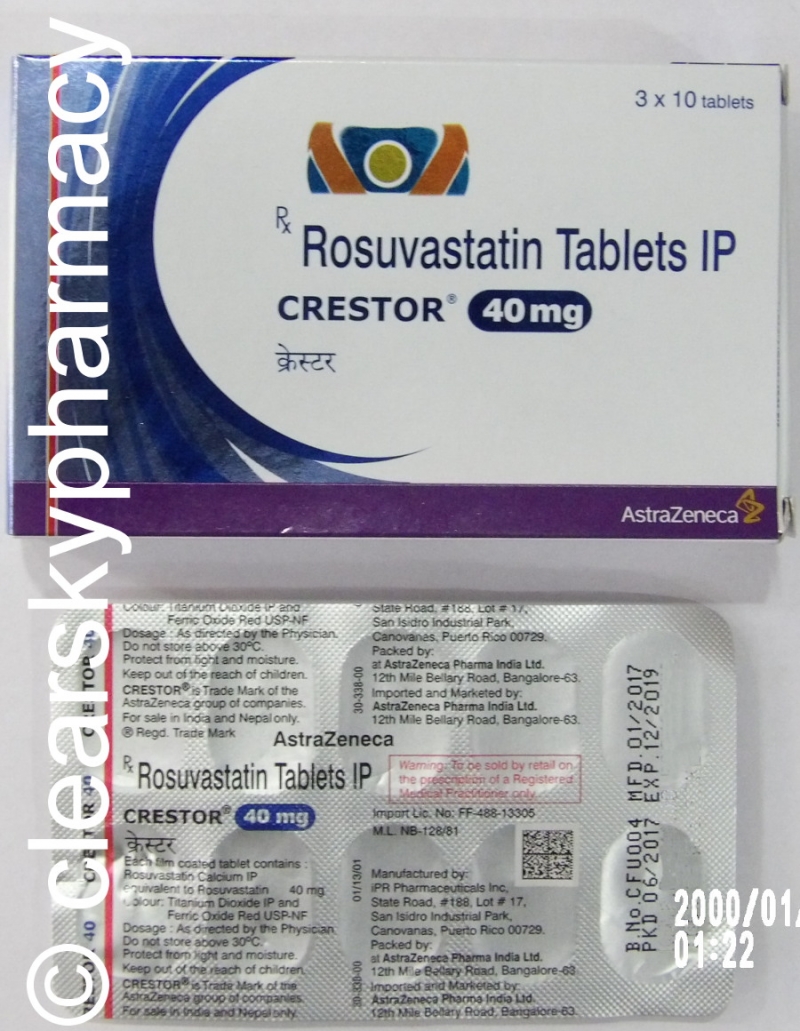
To ensure the best outcomes, patients on long-term Crestor therapy should:
- Attend regular follow-up appointments with their healthcare provider
- Undergo periodic blood tests to monitor cholesterol levels, liver function, and blood sugar
- Report any new or persistent side effects promptly
- Discuss any concerns about long-term use with their healthcare provider
- Periodically reassess the need for continued statin therapy based on overall cardiovascular risk
By maintaining ongoing communication with your healthcare team and staying informed about the potential risks and benefits, you can make the most informed decisions about your long-term use of Crestor.
Alternative Approaches: Options for Those Unable to Tolerate Crestor
While Crestor is an effective medication for many patients, some individuals may experience intolerable side effects or have contraindications that prevent its use. In these cases, alternative approaches to managing cholesterol and cardiovascular risk may be considered.

What options are available for patients who can’t take Crestor? Here are several alternatives that healthcare providers may recommend:
- Other statins: Different statins have slightly varying side effect profiles. Switching to another statin like atorvastatin (Lipitor) or pravastatin may be effective for some patients.
- Non-statin medications: Drugs like ezetimibe (Zetia) or PCSK9 inhibitors can help lower cholesterol through different mechanisms.
- Bile acid sequestrants: Medications such as cholestyramine or colesevelam can help reduce cholesterol absorption in the intestines.
- Fibrates: These drugs can help lower triglycerides and may have a modest effect on LDL cholesterol.
- Omega-3 fatty acids: High-dose prescription omega-3s may be recommended for some patients to help manage triglyceride levels.
- Lifestyle modifications: Emphasizing a heart-healthy diet, regular exercise, weight management, and smoking cessation can significantly impact cholesterol levels and overall cardiovascular health.
- Natural supplements: Some patients may explore natural options like red yeast rice or plant stanols/sterols, although these should be used under medical supervision.
It’s important to note that the appropriate alternative will depend on individual factors such as overall health, specific cholesterol profile, and cardiovascular risk. Always consult with your healthcare provider before making any changes to your cholesterol management plan.

Patient Education: Empowering Informed Decisions About Crestor Use
Educating patients about Crestor, its benefits, and potential side effects is crucial for promoting safe and effective use of the medication. By understanding the risks and benefits, patients can make informed decisions and actively participate in their healthcare.
How can patients become better informed about Crestor? Here are some strategies:
- Ask questions: Don’t hesitate to ask your healthcare provider about any concerns or uncertainties regarding Crestor.
- Read medication guides: Carefully review the patient information leaflet provided with your prescription.
- Stay updated: Keep informed about new research and guidelines related to statin use.
- Track your progress: Monitor your cholesterol levels and any changes in your health while taking Crestor.
- Join support groups: Connecting with other patients taking statins can provide valuable insights and support.
- Use reliable resources: Refer to reputable health websites and organizations for additional information about Crestor and cholesterol management.
Remember that while it’s important to be informed about potential side effects, the benefits of Crestor in reducing cardiovascular risk can be substantial for many patients. By working closely with your healthcare provider and staying educated about your medication, you can make the best decisions for your health and well-being.
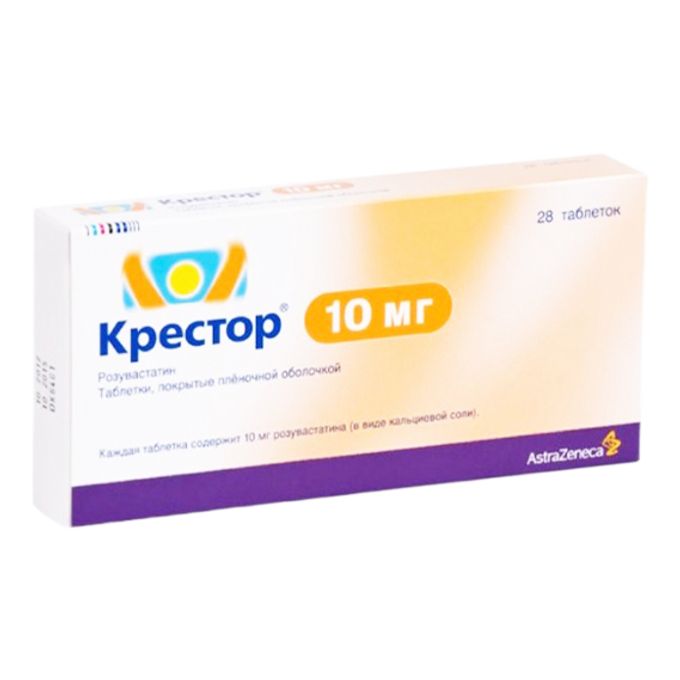
Crestor Side Effects | Common & Serious Side Effects of Rosuvastatin
The most common side effects of Crestor include headaches, abdominal pain and nausea. Serious side effects of Crestor may include muscle pain, tenderness and weakness, or myopathy. Crestor may increase the risk of diabetes, liver damage and hemorrhagic stroke.
The U.S. Food and Drug Administration approved Crestor (rosuvastatin) for treating cholesterol in 2003. Crestor is a statin like Lipitor.
At the time, the agency knew about cases of rhabdomyolysis during Crestor’s premarketing trials. Rhabdomyolysis is a rare form of muscle damage that can lead to severe kidney injury or failure.
The agency believed other statins already on the market had a similar rate of rhabdomyolysis. But in the drug’s first year, the number of rhabdomyolysis cases among Crestor users was higher than for other statins.
In 2005, the FDA required Crestor’s manufacturer, AstraZeneca, to add a warning to the drug’s label. The warning carried information about the risk of rhabdomyolysis and other muscle injuries.
The warning carried information about the risk of rhabdomyolysis and other muscle injuries.
Researchers continued to find previously unknown or underestimated risks of serious side effects. Other possible serious side effects of statins include hemorrhagic stroke, Type 2 diabetes and liver damage. The drug may also be linked to decreased cognition, such as memory loss and amnesia.
Common Side Effects of Crestor
Crestor is associated with several possible common side effects. These effects have been seen in at least 2% of people taking the drug in clinical trials.
Common side effects of Crestor include:
- Abdominal pain
-
Constipation -
Dizziness -
Headache -
Memory loss and confusion -
Muscle aches and pains -
Nausea -
Protein in your urine -
Weakness
Discuss side effects you experience while taking Crestor with your doctor. Seek medical attention for any serious side effects.
Seek medical attention for any serious side effects.
Muscle and Kidney Damage
The most common side effects for statin patients affect the muscles. Myalgia is the most common of the muscle-related side effects.
Crestor 5mg pill
The risk increases in patients 65 years and older. Patients with kidney impairment are also at an increased risk for myalgia. As are patients taking cyclosporine, atazanavir/ritonavir, lopinavir/ritonavir or simeprevir.
A 2022 study published by the American College of Cardiology that involved 19 placebo-controlled trials from 1990-2021 found a “small excess risk of muscle symptoms” in the first year of statin treatment. But study authors concluded that more than 90% of muscle complaints weren’t actually caused by statins.
Myopathy and Rhabdomyolysis
Crestor’s label carries a warning about skeletal muscle effects. It tells health care professionals to advise patients to “report unexplained muscle pain, tenderness, or weakness. ” The warning mentions myopathy and rhabdomyolysis specifically.
” The warning mentions myopathy and rhabdomyolysis specifically.
Myopathy is a group of disorders in which muscle fibers do not function properly. The most severe muscle disorder related to statins is rhabdomyolysis.
Rhabdomyolysis is a type of skeletal muscle damage that can lead to kidney damage and sometimes death. This condition can be detected and differentiated from myalgia by tests that reveal toxic levels of muscle enzymes.
An estimated one in every 10,000 statin users will develop rhabdomyolysis.
Muscular Problems
About 1 in 10,000 patients taking statins develop a severe muscle condition.
Source:
Harvard Medical School
Rhabdomyolysis causes skeletal muscle tissue to break down rapidly and travel into the bloodstream. One type of debris created in this muscle breakdown is a protein called myoglobin.
Myoglobin is harmful to the kidneys. As blood carrying myoglobin passes through the organs, it can cause serious problems including kidney failure.
In 2005, a study in the American Heart Association journal Circulation found patients taking Crestor were eight times more likely to develop rhabdomyolysis, renal failure or proteinuria — high levels of protein in the urine — than patients taking certain other statins.
Warning signs of rhabdomyolysis include muscle aches and dark-colored urine.
Type 2 Diabetes Risk
Studies have shown taking statins may increase a person’s risk of developing diabetes by 9 to 48 percent.
In 2008, a large drug trial exposed an increased diabetes risk for people taking Crestor.
Researchers looked at data from the 18,000-patient study. They found a 27 percent increase in the risk of patients developing diabetes.
The Women’s Health Initiative also conducted a study. Researchers found the diabetes risk increased to 48 percent among women taking statins.
Liver Damage
Statins can raise the levels of liver enzymes called serum alanine aminotransferase (ALT).
Studies have shown this side effect occurs in about 3 percent of patients taking statins. Serious liver damage occurs in about less than 1 percent. The degree of ALT level elevation can show the seriousness of liver injury.
Studies also show as many as three in every 100 patients taking Crestor experience side effects from elevated liver enzymes.
Liver injury is rare but if it happens, it usually occurs two to four months into Crestor therapy.
Patients who catch liver injury quickly can recover within one to two months after stopping the drug. Recurrence has been reported among people who restart Crestor.
AstraZeneca recommends doctors order blood tests to check patients’ livers before prescribing the drug. The company also tells patients to immediately call their doctors if they experience certain symptoms. These symptoms include feeling tired or weak, pain in the upper belly, skin yellowing, dark urine and yellowing of the whites of the eyes.
Hemorrhagic Strokes
Crestor prevents recurrence of ischemic stroke.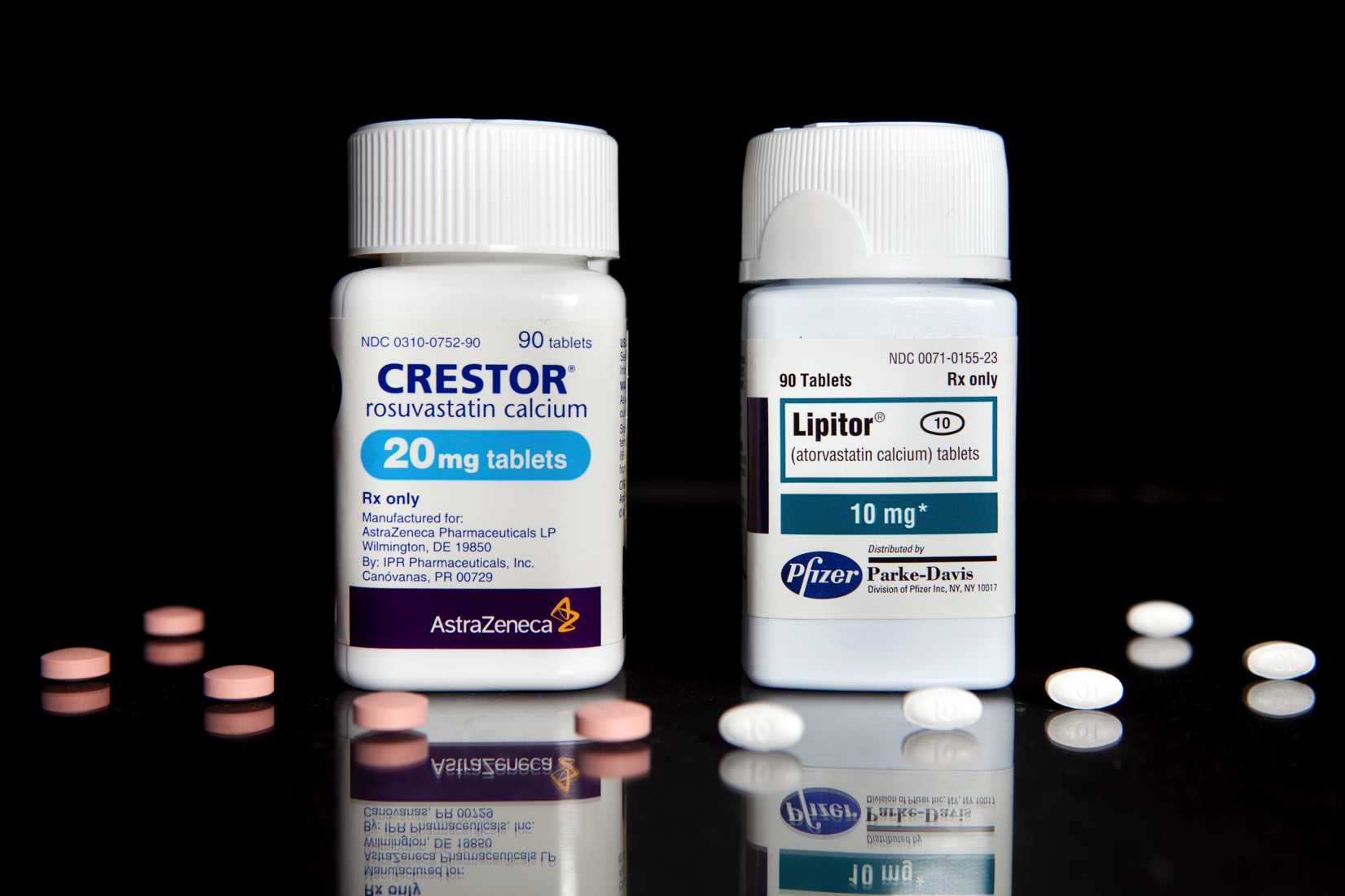 But statins may increase the risk of hemorrhagic strokes.
But statins may increase the risk of hemorrhagic strokes.
Several studies have found a higher risk of hemorrhagic stroke in populations with low cholesterol levels. Scientists have not determined the exact cause. But the general hypothesis is that cholesterol may somehow be important to cell-wall integrity.
In other words, low cholesterol levels may increase the risk of blood-vessel rupture.
Memory Impairment
Cases of cognitive impairment have been reported in patients using Crestor and other statins.
The condition is considered rare. But the FDA required AstraZeneca to add the condition to Crestor’s label. The agency based its decision on studies and adverse event reports.
Memory Impairment
Memory impairment may be reversible by temporarily discontinuing Crestor.
Source:
FDA-approved drug label
Reports included cases of memory loss, forgetfulness, amnesia, memory impairment and confusion. Crestor’s label says the conditions can happen at any time after taking Crestor.
The conditions are reversible by discontinuing the drug temporarily. The recovery time averages about three weeks. Patients should not stop taking a prescription drug without consulting a doctor.
In 2015, researchers compared people who took any type of cholesterol medicine with those who didn’t. They found people taking the medicine were nearly four times more likely to report memory loss within 30 days after starting the drug.
Crestor Side Effect Facts
Please seek the advice of a medical professional before making health care decisions.
TELL US WHAT YOU THINK
Did You Find Drugwatch Helpful?
Yes
No
Thank you for your feedback. Do you have any thoughts you’d like to share about Drugwatch.
 com?
com?
This article changed my life!
This article was informative
I have a question
How can we improve this page?
This article contains incorrect information
This article doesn’t have the information I’m looking for
I have a question
How can we improve this page?
Thank You for Your Feedback
We appreciate your feedback. One of our content team members will be in touch with you soon.
We appreciate your feedback. One of our content team members will be in touch with you soon.
Crestor side effects and how to avoid them
Crestor is a statin that helps treat cholesterol but it can have potentially serious side effects
Crestor side effects | Muscle Pain | Serious side effects | How long do side effects last? | Warnings | Interactions | How to avoid side effects
Crestor is the brand name for the lipid-lowering medication rosuvastatin calcium. Crestor is part of a class of medications known as statins. Statins are HMG-CoA reductase inhibitors because they block the activity of the enzyme HMG-CoA in the liver. Individuals taking Crestor should anticipate a reduction in total cholesterol, low-density lipoprotein (LDL) cholesterol, and triglycerides with a concomitant increase in high-density lipoprotein (HDL) cholesterol.
Statins are HMG-CoA reductase inhibitors because they block the activity of the enzyme HMG-CoA in the liver. Individuals taking Crestor should anticipate a reduction in total cholesterol, low-density lipoprotein (LDL) cholesterol, and triglycerides with a concomitant increase in high-density lipoprotein (HDL) cholesterol.
Crestor should be used under the care of a healthcare professional and part of a healthy lifestyle which may include diet modification and exercise. In the U.S., Crestor is manufactured by AstraZeneca and is available in 5, 10, 20, or 40 mg tablets.
Lipid-lowering medications like Crestor can be associated with potentially serious adverse effects. In this article, we will discuss some of the side effects, warnings, and interactions associated with Crestor use as well as how to avoid them.
RELATED: Crestor vs. Lipitor: Which is right for you l Side effects of statins and how to avoid them
Common side effects of Crestor
Statins are generally well-tolerated medications. However, statin use, including the use of Crestor, is associated with some very common side effects. Many side effects associated with Crestor use are self-limiting, meaning they go away on their own. If any of the following adverse effects become bothersome, notify your healthcare provider:
However, statin use, including the use of Crestor, is associated with some very common side effects. Many side effects associated with Crestor use are self-limiting, meaning they go away on their own. If any of the following adverse effects become bothersome, notify your healthcare provider:
- Headache, dizziness, insomnia, tiredness, memory loss, and cognitive impairment
- Myopathy and myalgia (muscle aches and muscle pains)
- Arthralgia or pain in the joints
- Asthenia or physical weakness with a lack of energy
- Gastrointestinal symptoms including abdominal pain, nausea, and constipation
- Diabetes
- Elevated liver enzymes (AST, ALT)
- Elevated creatine kinase (CK)
- Protein or blood in the urine
- Gynecomastia
Muscle pain
Statins, including Crestor, are associated with various statin-associated muscle symptoms (SAMS), which can cause statin intolerance in certain individuals. Muscle complaints vary with statin use, ranging from mild to severe symptoms. Mild symptoms include muscle pain, cramping, and perceived muscle weakness. Rhabdomyolysis and statin-induced necrotizing autoimmune myopathy (SINAM) are more serious side effects that need immediate medical attention.
Muscle complaints vary with statin use, ranging from mild to severe symptoms. Mild symptoms include muscle pain, cramping, and perceived muscle weakness. Rhabdomyolysis and statin-induced necrotizing autoimmune myopathy (SINAM) are more serious side effects that need immediate medical attention.
Individuals who are taking statins and experience severe muscle pain or weakness should speak with their healthcare provider about alternative treatment options.
Serious side effects of Crestor
Crestor is associated with some serious side effects. If you experience any of the adverse effects listed below, it is important to notify a healthcare professional right away.
- Hepatotoxicity could lead to liver damage and other liver problems
- Myopathy including statin-induced necrotizing autoimmune myopathy (SINAM)
- Rhabdomyolysis, a breakdown of muscle tissue that can be life-threatening
- Tendon rupture
- Acute renal failure
- Pancreatitis
- Hypersensitivity reaction
- Angioedema
- Diabetes
- Thrombocytopenia or low platelets
- Interstitial lung disease
Crestor side effects in women vs.
 men
men
There are limited studies available specifically looking at the tolerance of statins in women compared to men. While most side effects associated with Crestor use are the same in women and men, women have been reported to have a higher incidence of statin-induced myopathies. This may be caused by estrogen competing for CYP450 enzymes that metabolize statins in the liver, which could also result in drug-hormone interactions. Additionally, higher estrogen levels, similar to levels occurring during pregnancy, alter lipid metabolism and cause hyperlipidemia. Polymorphisms (genetic variants found in a given population) of the estrogen receptor gene are associated with variations in triglyceride and HDL levels. In combination, all of these factors contribute to an increased side effect profile in women compared to men.
Men, on the other hand, are more likely to experience the rare side effect of gynecomastia, a benign, progressive enlargement of male breast tissue. This effect usually reverses within a few months of discontinuing statin use.
It is important to note that these associations are for statins in general and may vary depending on which statin is used.
How long do side effects last?
The duration of potential side effects associated with Crestor will depend on the type of side effect and how long the medication has been used. Mild side effects (headache, nausea, and insomnia) usually go away over a short period of time (days to weeks). More severe side effects range from days to permanent:
- Rhabdomyolysis will usually begin to resolve within days of discontinuing the medication
- Autoimmune myopathy is often severe and may persist long after the discontinuation of medication
- Liver problems may be permanent and unfortunately do not usually appear until an individual has been taking Crestor for several months
Crestor contraindications & warnings
- Abuse and dependence: Crestor is not habit-forming or addictive, and there are no withdrawal symptoms associated with discontinuing Crestor use.

- Overdose: The maximum dose of Crestor for individuals without kidney problems or liver disease is 40 mg per day. It is important to only take the dosage of medication that was prescribed. While fatal overdose with Crestor is unlikely, if you believe you have taken too much medication or if you have taken too much medication and have kidney or liver disease, contact the Poison Control Centers at 800-222-1222 or seek emergency medical treatment right away.
- Restrictions: Crestor is absolutely contraindicated for use in the following individuals:
- Those with a known hypersensitivity to the drug or components in the drug
- Individuals with acute or active liver disease, which may include anyone with unexplained, persistent elevations in hepatic transaminases
- Women who are pregnant or who may become pregnant
- Nursing mothers
Hepatic transaminases, enzymes in the liver, may be persistently elevated while taking this medication.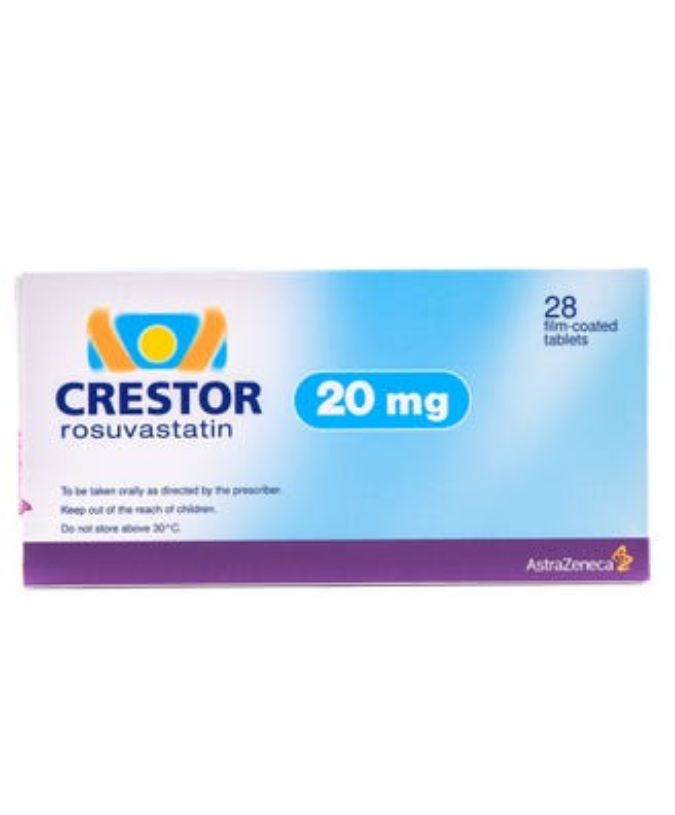 Individuals with acute liver disease should not take this medication. Individuals with liver disease from chronic alcohol use are known to have higher levels of rosuvastatin in the blood. Liver enzymes should be monitored before and during treatment. High liver enzymes usually indicate liver impairment or damage.
Individuals with acute liver disease should not take this medication. Individuals with liver disease from chronic alcohol use are known to have higher levels of rosuvastatin in the blood. Liver enzymes should be monitored before and during treatment. High liver enzymes usually indicate liver impairment or damage.
Renal impairment and dose adjustment
Individuals with mild to moderate renal impairment do not require dose adjustment when taking Crestor. However, exposure to rosuvastatin is increased to a clinically significant extent in individuals with severe renal impairment who are not receiving hemodialysis. Crestor dosing should be adjusted for individuals with severe renal impairment.
Teratogenic effects
Crestor is Pregnancy Category X and is absolutely contraindicated for use in pregnant women. Serum cholesterol and triglycerides increase during pregnancy as cholesterol and lipid products are necessary for the growth of the developing fetus. As such, lipid-lowering agents, including Crestor, should not be used during pregnancy.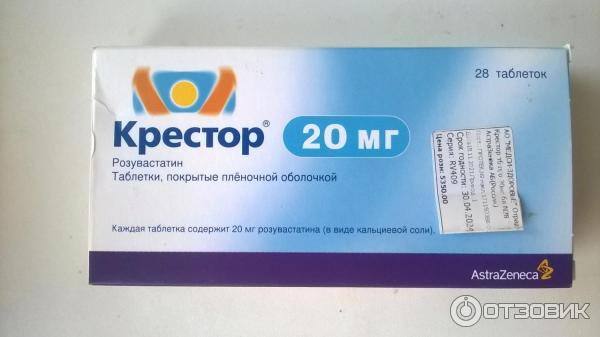 There is no known clinical benefit of using this medication while pregnant.
There is no known clinical benefit of using this medication while pregnant.
Breastfeeding mothers
Statins have been shown to be in human breast milk. In animal studies, rosuvastatin was shown to be in breast milk at three times higher concentrations than measured in plasma. If Crestor is required to be used in nursing mothers, they should be advised not to nurse their infants. Statins can also cause serious adverse reactions in infants.
Individuals of Asian descent
Laboratory studies have demonstrated almost a two-fold increase of serum rosuvastatin levels in Asian patients when compared to Caucasian patients. Therefore, Crestor dosage should be adjusted for individuals of Asian descent.
Individuals with hypothyroidism
Hypothyroidism is a well-known cause of lipid abnormalities and is associated with atherosclerosis, cholesterol plaque accumulation on artery walls. Individuals who have thyroid disease are at an increased risk of developing SAMS and rhabdomyolysis while taking statins. If you have known thyroid disease, it is important to speak with your healthcare provider before beginning any lipid-lowering agent, including Crestor.
If you have known thyroid disease, it is important to speak with your healthcare provider before beginning any lipid-lowering agent, including Crestor.
Crestor interactions
Crestor has several potential drug interactions. It is important to inform your healthcare provider about all of the medicines you are taking prior to taking Crestor as well as any changes you may have to your medications while actively using Crestor. The following medications have significant interactions with Crestor and should be avoided:
- Cyclosporine: Increases rosuvastatin exposure. With this medication, the Crestor dose should be limited to 5 mg once per day.
- Gemfibrozil: Increases rosuvastatin exposure and risk of myopathy. With this medication, the Crestor dose should be limited to 10 mg once per day.
- Lopinavir/ritonavir or atazanavir/ritonavir: Increases rosuvastatin exposure.
 With this medication, the Crestor dose should be limited to 10 mg once per day.
With this medication, the Crestor dose should be limited to 10 mg once per day. - Coumarin anticoagulants including warfarin: Prolongs INR (a test used to determine bleeding time and blood coagulation). It is important to monitor the INR frequently until it is stable before initiating or altering Crestor therapy while taking a coumarin anticoagulant.
- Lipid-lowering therapies: May increase skeletal muscle side effects. Fibrate medications (fenofibrate), niacin, bile acid sequestrants (cholestyramine), and cholesterol absorption inhibitors (ezetimibe) should be used with extreme caution when taking Crestor.
If you are concerned about any medications you are taking or are not sure if one of your medicines may interact with Crestor, speak with your healthcare provider.
How to avoid Crestor side effects
1. It is important to follow medical advice while taking this medication
Take only the dose prescribed by a healthcare professional, taking it how and when prescribed. If there is a missed dose, take the next dose as soon as you remember, but skip it if it is too close to the next scheduled dose. Patients should continue taking the medication as prescribed even if they feel well after the first few doses.
If there is a missed dose, take the next dose as soon as you remember, but skip it if it is too close to the next scheduled dose. Patients should continue taking the medication as prescribed even if they feel well after the first few doses.
2. Do not discontinue this use of this medication without seeking medical advice
You should not discontinue a statin unless you with your healthcare provider have decided that is the right decision. Most individuals who abruptly discontinue statins re-experience elevated cholesterol levels and potentially cardiovascular side effects.
3. Disclose a full medication list, health history, and allergies before taking Crestor
This includes all medications and supplements, any medical conditions present, or any allergic reactions to medications experienced in the past.
4. Store the medication correctly and out of the reach of children
Crestor should be stored at room temperature (68 to 77°F). This medication should be stored out of reach of children, as even low doses can be harmful to small children who were not prescribed it.
This medication should be stored out of reach of children, as even low doses can be harmful to small children who were not prescribed it.
5. Swallow the tablet whole
Do not crush, break or chew the tablet.
6. Avoid taking this medication with antacids
Antacids and other magnesium salts reduce the amount of Crestor in the systemic circulation by up to 50%. If antacids must be taken, take them at least two hours before or two hours after Crestor administration.
7. Maintain a healthy weight with a healthful diet and exercise if tolerated
Many individuals take Crestor daily for many years. Crestor is most effective when it is used in combination with a healthy lifestyle which includes a healthy diet and exercise. With appropriate lifestyle modifications, it is possible to reduce several unwanted side effects and even reduce the need for this medication.
8. Consider your exercise regimen while taking this medication
Do not take this medication around the time of day when you exercise and do not “overdo” your exercise while taking this medication. Individuals who aggressively exercise while taking statins are more likely to experience severe muscle problems.
Individuals who aggressively exercise while taking statins are more likely to experience severe muscle problems.
9. Do not take this medication if you will be unable to have your liver enzymes routinely monitored
This medication can elevate your liver enzymes which can cause liver damage and even acute hepatitis. It is important that individuals taking this medication have access to facilities that can perform the appropriate blood tests. Seek medical care immediately if you experience any symptoms of liver problems, which may include feeling unusually tired or weak, loss of appetite, upper abdominal pain, dark urine, or yellowing of the skin or eyes.
10. Women of childbearing age should use reliable contraception while taking this medication
Crestor is associated with teratogenic effects on developing fetuses. Women who need to take this medication should not become or try to become pregnant while taking Crestor.
11. Patients should immediately seek medical care if they experience any type of allergic reaction to this medication or unexplained muscle pain
Allergic responses should be reported and treated as early as possible. Any type of serious adverse effect or potential overdose should receive medical attention immediately.
Any type of serious adverse effect or potential overdose should receive medical attention immediately.
Side effects, what helps, composition
Publication date: 01/16/2023 POSSIBLE SIDE EFFECTS. A SPECIALIST’S CONSULTATION IS REQUIRED.For the heart and blood vesselsCholesterol
The author of the article
Ibrayeva Ekaterina Anatolyevna,
Diploma of pharmaceutical education: 105924 3510869 reg. number 31955
All authors
Contents of the article
- Crestor: active substance
- Crestor: from what?
- Crestor side effects
- Crestor or Rosuvastatin: which is better?
- Crestor or Mertenil: which is better?
- Crestor or Liprimar?
- Atorvastatin or Crestor: which is better?
- Summary
- Ask an expert about the topic of the article
High blood cholesterol is considered one of the risk factors for death in coronary disease and other diseases of the heart and blood vessels.
The All-Russian Scientific Society of Cardiology has developed criteria for diagnosing lipid metabolism disorders. They determine the content of total cholesterol (TC) and high and low density lipoproteins (HDL and LDL) in the blood serum:
| Lipid parameters | Values in mmol/L |
| OXC | < 5.0 |
| LDL | < 3.0 |
| HDL | 1, 0 (male), 1.2 (female) |
An elevated level is called hypercholesterolemia. Often, with high cholesterol, patients with diseases of the heart and blood vessels are shown statin drugs. But only a doctor can prescribe them, and only when lifestyle changes, diets, giving up bad habits do not work.
Pharmacist Ekaterina Ibrayeva talks about one of these drugs, Crestor. We learn about its composition, indications, side effects, and also compare it with analogues.
Crestor: active ingredient
Crestor contains the active ingredient rosuvastatin. The name itself indicates that Crestor belongs to the statin group. It has actions characteristic of this group:
The name itself indicates that Crestor belongs to the statin group. It has actions characteristic of this group:
- reduces cholesterol synthesis in the liver
- reduces the amount of “bad” cholesterol, ie. LDL and triglycerides
Crestor for cholesterol is available in film-coated tablets in dosages:
- Crestor 5 mg
- Crestor 10 mg
- Crestor 20 mg
- Crestor 40 mg
The doctor prescribes and chooses the dosage. Self-medication with any statins is unacceptable.
All products Crestor 28 reviews
Crestor: from what?
Crestor tablets are prescribed in the following cases:
- elevated TC and triglycerides not reduced by diet and exercise
- ischemic heart disease (with atherosclerosis of the coronary vessels reduces the risk of heart attack and death)
- after myocardial infarction and stroke (reduces the risk of recurrence)
- atherosclerosis of the lower extremities (slows down the development of the disease)
- diabetes mellitus complicated by hypertension and lipid disorders (reduces the risk of complications in cardiovascular diseases)
Crestor: side effects
Crestor is generally well tolerated by patients. The most common side effects are:
The most common side effects are:
- headache, dizziness
- abdominal pain, constipation, nausea
- muscle pain
- asthenia (fatigue, mood lability, weakness)
Rare cases of rhabdomyolysis may occur when Crestor is used, especially at doses greater than 20 mg, in patients at risk for myopathy. This is a disease associated with the breakdown of muscle tissue and dangerous acute renal failure.
Crestor or Rosuvastatin: which is better?
Crestor is an original medicine produced by the English company AstraZeneca UK Limited. The substance of the active substance is produced in European countries: Great Britain, Switzerland, Belgium.
Rosuvastatin is marketed by companies in Russia, Poland, Cyprus and Israel. The most commonly used substances are Indian plants. In addition, generics differ from Crestor in excipients and production technologies. Generics do not need to be clinically tested.
The composition, dosage, indications and contraindications for Rosuvastatin and Crestor are the same, but the effectiveness may vary. If the doctor recommended Crestor, then it can be replaced with Rosuvastatin, and vice versa. Dosage cannot be changed.
If the doctor recommended Crestor, then it can be replaced with Rosuvastatin, and vice versa. Dosage cannot be changed.
All products Rosuvastatin 20 reviews
Crestor or Mertenil: which is better?
The active substance of Mertenil is also rosuvastatin. It is produced by the Hungarian company Gedeon Richter from an Indian-made substance. The drug has the same dosages, indications, contraindications and side effects as Crestor. Analogues are interchangeable.
All products Mertenil 5 reviews
Crestor or Liprimar?
Liprimar is an original drug with the active ingredient atorvastatin, which is classified as a third-generation statin. It is believed that the higher the generation, the less side effects should be and the better tolerability.
Liprimar has the same indications and contraindications as Crestor. The frequency of taking both drugs is once a day. Both drugs, unlike previous generations, stabilize atherosclerotic plaques and reduce the amount of “bad” cholesterol.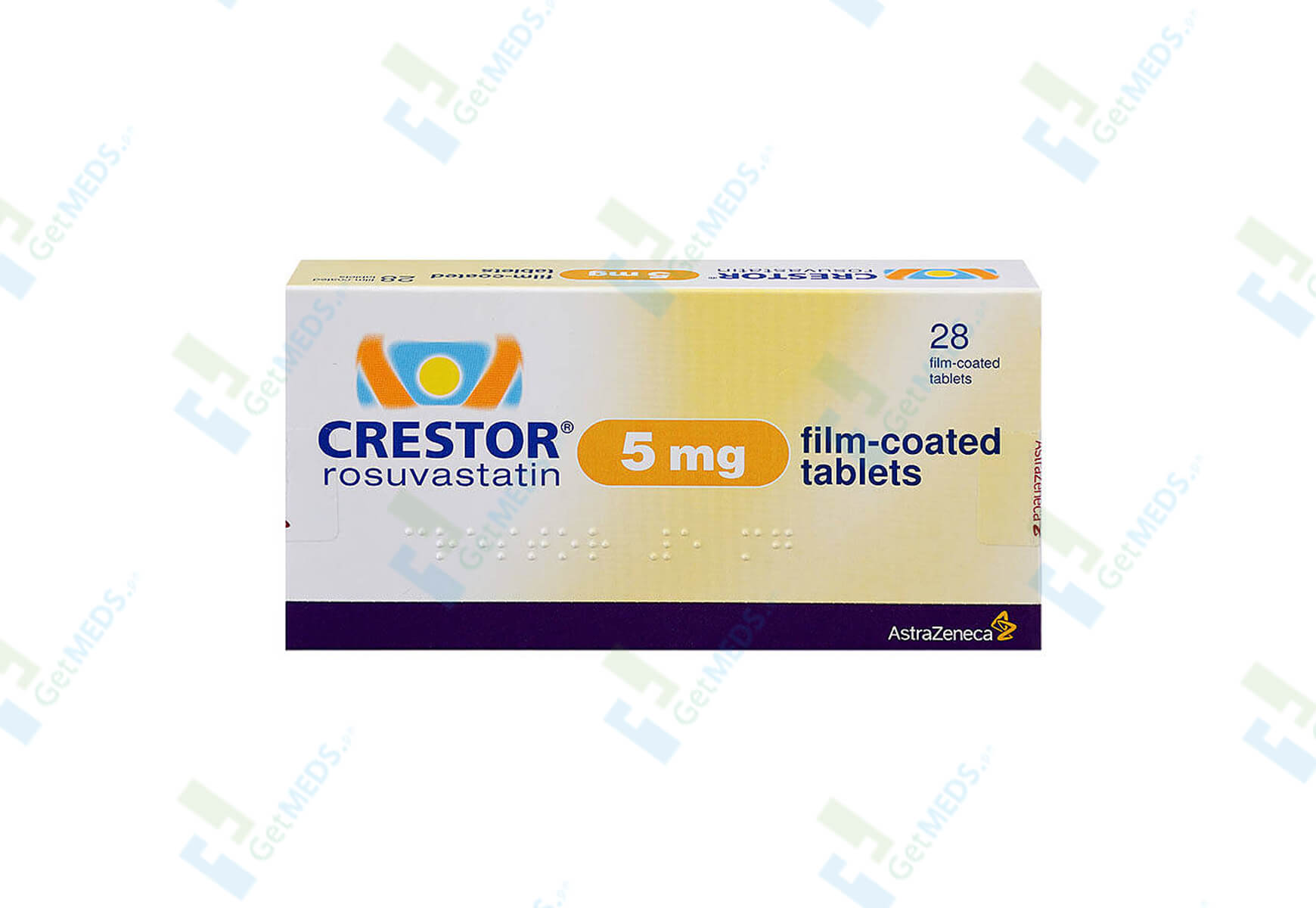 But only Crestor additionally increases the concentration of “good” cholesterol in the blood.
But only Crestor additionally increases the concentration of “good” cholesterol in the blood.
Answer the question: “Crestor or Liprimar: which is better?” only the attending physician can. When prescribing statins, he takes into account many factors, including the use of other medications. Liprimar and Crestor interact with a large number of different drugs, which affects the effectiveness of treatment or may be harmful to health.
All products Liprimar 8 reviews
Atorvastatin or Crestor: which is better?
Atorvastatin and Crestor are third and fourth generation statins.
Crestor is more effective: it has a therapeutic effect in smaller dosages. He has a minimum dose of 5 mg, a maximum of 40 mg, for Atorvastatin – 10 and 80 mg, respectively. Rosuvastatin has fewer side effects than atorvastatin.
If a doctor has prescribed a specific statin, then it cannot be replaced with an analogue with a different active substance, the dosage cannot be changed, and the drug should not be discontinued.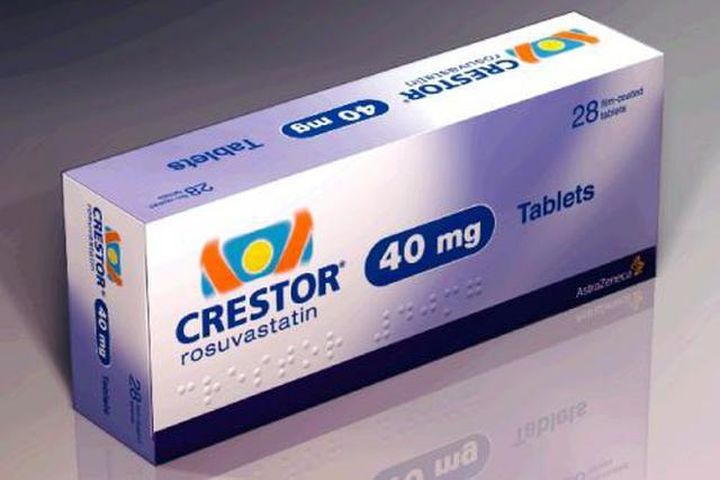 Only the attending physician can replace Crestor with Atorvastatin or vice versa.
Only the attending physician can replace Crestor with Atorvastatin or vice versa.
All products Atorvastatin 22 reviews
Summary
- The active ingredient in Crestor is rosuvastatin. It reduces the synthesis of cholesterol in the liver and the content of “bad” cholesterol in the blood.
- Crestor is prescribed to maintain normal cholesterol, for secondary prevention in patients with myocardial infarction, to reduce the risk of death in cardiovascular diseases.
- Crestor is generally well tolerated by patients. The most dangerous side effect is rhabdomyolysis in patients at risk for myopathy.
- Crestor, Mertenil and Rosuvastatin are complete analogues. The drugs are interchangeable.
- Atorvastatin and Liprimar are third-generation statins. The appointment of statins and the choice of a specific drug in this case is the prerogative of the doctor.
Ask an expert about the topic of the article
Still have questions? Ask them in the comments below and our experts will answer you. There you can also share your experience with other Megatips readers.
There you can also share your experience with other Megatips readers.
Share mega tip
Like the article? Tell mom, dad, grandma and aunt Galya from the third entrance
Copy link
Crestor 20mg No. 28 tab (Rozuvastatin)
Instructions for medical use
medicine
CRESTOR
Trade name 9 0037 Crestor
International Nonproprietary Name
Rosuvastatin
Dosage form
Tablets, coated 10 and 20 mg
Composition
One tablet contains
active substance: rosuvastatin 10 and 20 mg in the form of rosuvastatin calcium
excipients: lactose monohydrate, microcrystalline cellulose, calcium phosphate, crospovidone, magnesium stearate, hypromellose, glycerol triacetate, titanium dioxide (E171), iron oxide red (E172), water purified.
Description
Tablets 10 mg: film-coated tablets, pink, round, biconvex, debossed with “ZD4522 10” on one side.
Tablets 20 mg: pink, round, biconvex film-coated tablets, debossed with “ZD4522 20” on one side.
Pharmacotherapeutic group
Lipid-lowering drugs. Hypocholesterolemic and hypotriglyceridemic drugs. HMG-CoA reductase inhibitors. Rosuvastatin
ATC code C10A A07
Pharmacological properties
Pharmacokinetics
Rosuvastatin is a selective, competitive inhibitor of HMG-CoA reductase, an enzyme that converts 3-hydroxy-3-methylglutarylcoenzyme A to mevalonate, a cholesterol precursor. The main target of rosuvastatin is the liver, where cholesterol (Cholesterol) is synthesized and low-density lipoprotein (LDL) is catabolized.
Rosuvastatin increases the number of hepatic LDL receptors on the cell surface, increasing the uptake and catabolism of LDL, which leads to inhibition of the synthesis of very low density lipoproteins (VLDL), thereby reducing the total amount of LDL and VLDL. The maximum plasma concentration of rosuvastatin is reached approximately 5 hours after oral administration. Absolute bioavailability is approximately 20%. Rosuvastatin is absorbed primarily by the liver. The volume of distribution of rosuvastatin is approximately 134 liters. Approx 90% rosuvastatin binds to plasma proteins, mainly albumin. Rosuvastatin undergoes limited metabolism (about 10%). Rosuvastatin is a non-core substrate for metabolism by enzymes of the cytochrome P450 system. The main isoenzyme involved in the metabolism of rosuvastatin is CYP2C9. Enzymes CYP2C19, CYP3A4 and CYP2D6 are less involved in metabolism.
The volume of distribution of rosuvastatin is approximately 134 liters. Approx 90% rosuvastatin binds to plasma proteins, mainly albumin. Rosuvastatin undergoes limited metabolism (about 10%). Rosuvastatin is a non-core substrate for metabolism by enzymes of the cytochrome P450 system. The main isoenzyme involved in the metabolism of rosuvastatin is CYP2C9. Enzymes CYP2C19, CYP3A4 and CYP2D6 are less involved in metabolism.
The main identified metabolites of rosuvastatin are N-dismethyl and lactone metabolites. N-dismethyl is about 50% less active than rosuvastatin, lactone metabolites are not pharmacologically active. Over 90% of the pharmacological activity of inhibiting circulating HMG-CoA reductase is provided by rosuvastatin, the rest – by its metabolites.
Approximately 90% of a dose of rosuvastatin is excreted unchanged in the faeces (including absorbed and unabsorbed rosuvastatin). The rest is excreted in the urine. The plasma half-life (T ½) is approximately 19 hours. The half-life does not change with increasing dose of the drug. The geometric mean plasma clearance is approximately 50 liters/hour (coefficient of variation 21.7%). As with other HMG-CoA reductase inhibitors, the hepatic uptake of rosuvastatin involves the membrane cholesterol transporter, which plays an important role in the hepatic elimination of Crestor.
The half-life does not change with increasing dose of the drug. The geometric mean plasma clearance is approximately 50 liters/hour (coefficient of variation 21.7%). As with other HMG-CoA reductase inhibitors, the hepatic uptake of rosuvastatin involves the membrane cholesterol transporter, which plays an important role in the hepatic elimination of Crestor.
The systemic exposure of rosuvastatin increases in proportion to the dose.
The therapeutic effect appears within one week after the start of Crestor therapy, after 2 weeks of treatment it reaches 90% of the maximum possible effect. The maximum therapeutic effect is usually achieved by the 4th week and is maintained with regular use.
Pharmacodynamics
Crestor reduces elevated levels of LDL cholesterol (LDL-C), total cholesterol, triglycerides (TG), increases high-density lipoprotein cholesterol (HDL-C), and also reduces the content of apolipoprotein B (ApoB), non-HDL-C , VLDL-C, VLDL-C and increases apolipoprotein A-I (ApoA-I), decreases LDL-C/HDL-C, total/HDL-C and non-HDL-C/HDL-C and ApoB/ApoA ratio -I.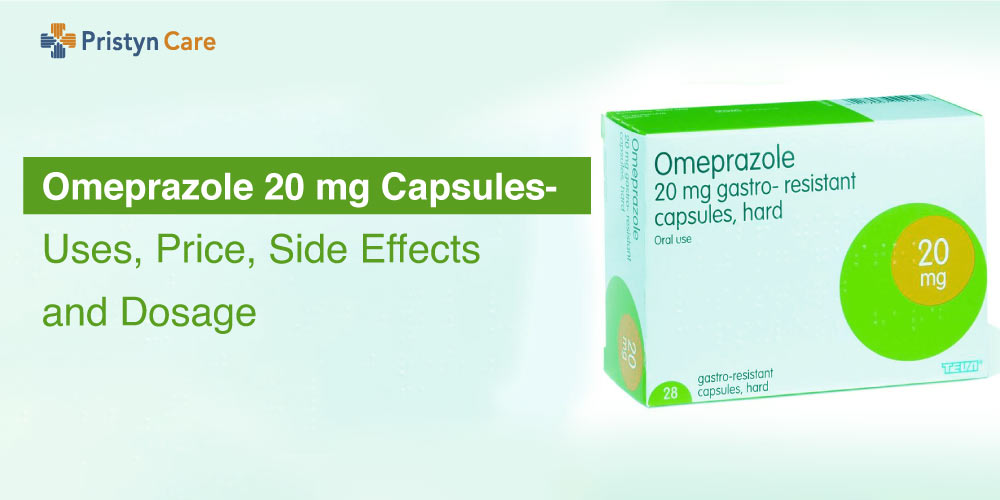
Crestor is effective in adult patients with hypercholesterolemia with or without hypertriglyceridemia, regardless of race, sex or age, and with familial hypercholesterolemia.
Indication
Primary hypercholesterolemia (type IIa, including familial heterozygous hypercholesterolemia) or mixed dyslipidemia (type IIb) as an adjunct to diet when diet and other non-drug treatments (eg, exercise, weight loss) are inadequate
Homozygous familial hypercholesterolemia as an adjunct to diet and other lipid-lowering therapy (e.g. LDL apheresis), or when such therapy is not appropriate for the patient
As an adjunct to diet to slow atherosclerosis progression in adult patients as part of therapy reducing levels of total cholesterol (TC) and LDL cholesterol to target levels
– prevention of cardiovascular complications in adult patients with an increased risk of developing atherosclerotic cardiovascular disease as adjuvant therapy.
Dosage and administration
Inside, do not chew or crush the tablet, swallow it whole with water.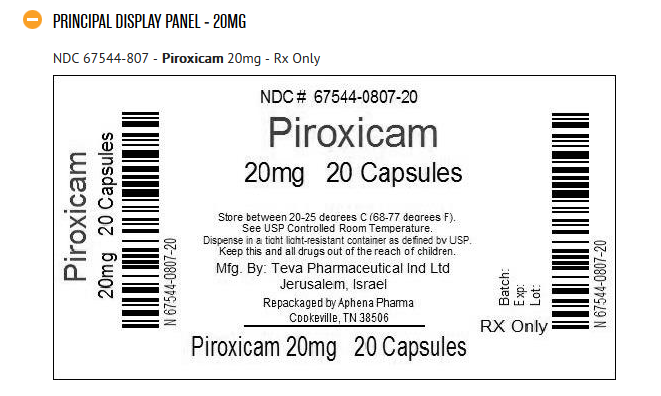 May be administered with or without food. Prior to and during Crestor therapy, the patient should follow a standard lipid-lowering diet. The dose of the drug should be selected individually depending on the goals of therapy and response to treatment.
May be administered with or without food. Prior to and during Crestor therapy, the patient should follow a standard lipid-lowering diet. The dose of the drug should be selected individually depending on the goals of therapy and response to treatment.
The recommended starting dose for patients starting to take the drug, or for patients transferred from taking other HMG-CoA reductase inhibitors, should be 5 or 10 mg Crestor 1 time per day. When choosing an initial dose, one should be guided by the level of cholesterol and take into account the possible risk of cardiovascular complications, and it is also necessary to evaluate the potential risk of side effects. If necessary, the dose may be increased after 4 weeks of taking the drug. Increase the dose of the drug gradually.
Due to the possible development of side effects with a dose of 40 mg, an increase in dose to a maximum of 40 mg should only be considered in patients with severe hypercholesterolemia and at high risk of cardiovascular complications (especially in patients with familial hypercholesterolemia) in whom the desired result of therapy when taking a dose of 20 mg.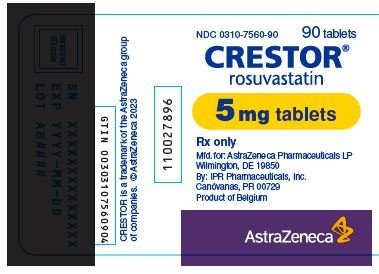 Monitoring of patients receiving the drug at a dose of 40 mg is recommended.
Monitoring of patients receiving the drug at a dose of 40 mg is recommended.
The 40 mg dose is not recommended for previously naïve patients. After 2-4 weeks of therapy and / or with an increase in the dose of Crestor, monitoring of lipid metabolism is necessary (if necessary, dose adjustment is required).
Prevention of cardiovascular complications in adult patients with an increased risk of developing atherosclerotic cardiovascular disease as an adjuvant therapy
The recommended dose is 20 mg once a day.
Elderly patients
No dose adjustment required. Patients over 70 years of age are recommended an initial dose of 5 mg.
Patients with renal insufficiency
In patients with mild or moderate renal insufficiency, dose adjustment is not required, the recommended initial dose of the drug is 5 mg. In patients with moderate renal impairment (creatinine clearance less than 60 ml / min), the use of the drug at a dosage of 40 mg is contraindicated. In patients with severe renal insufficiency (creatinine clearance less than 30 ml / min), the use of Crestor is contraindicated.
Patients with hepatic insufficiency
There is no experience of using the drug in patients with a score above 9 on the Child-Pugh scale.
Special populations. Ethnic groups
When studying the pharmacokinetic parameters of Crestor in patients belonging to different ethnic groups, an increase in the systemic concentration of rosuvastatin was noted in the Japanese and Chinese. This fact should be taken into account when prescribing rosuvastatin to these groups of patients. The recommended starting dose for Asian patients is 5 mg.
Patients predisposed to myopathy
Do not prescribe the drug at a dose of 40 mg to patients with factors predisposed to the development of myopathy. The recommended starting dose for this group of patients is 5 mg.
Patients with SLCO1B1 (OATP1B1) c.521CC and ABCG2 c.421AA genotypes are associated with increased exposure to rosuvastatin (SCM) compared to SLCO1B1 c.521TT and ABCG2 c.421CC. Patients with c.521CC or c.421AA genotypes are advised to take Crestor® at a maximum of 20 mg once daily.
Side effects
Often (> 1/100, 1/1000, 1/10 000, < 1/1 000)
– hypersensitivity reactions, including angioedema
– myopathy, rhabdomyolysis
– increased levels of “liver” transaminases, pancreatitis
Very rare (< 1/10,000)
– jaundice, hepatitis
– polyneuropathy
– memory loss
– hematuria
– arthralgia
– depression, sleep disorders
– sexual dysfunction
Isolated cases
– inter static lung disease
Frequency unspecified
Diarrhea
Immune-mediated necrotizing myopathy
Cough, dyspnea
Stevens-Johnson syndrome
Gynecomastia
Peripheral edema
Patients treated with Crestor may have proteinuria. In most cases, proteinuria decreases or disappears during therapy and does not indicate the onset of acute or progression of existing kidney disease. As with other HMG-CoA reductase inhibitors, the incidence of side effects is dose-dependent.
Contraindications
– hypersensitivity to rosuvastatin or any of the components of the drug
– liver disease in the active phase, including a persistent increase in serum transaminase activity and any increase in serum transaminase activity (more than 3 times the upper limit of normal)
– severe renal dysfunction (creatinine clearance less than 30 ml / min)
– myopathies
– simultaneous use of cyclosporine
– pregnancy, lactation, lack of adequate methods
contraception
– predisposition to the development of myotoxic complications
– hereditary galactose intolerance, lactase deficiency
insufficiency or malabsorption syndrome of glucose and galactose
For a dose of 40 mg
– moderate renal failure (creatinine clearance less than 60 ml / min) 900 37 – hypothyroidism
– conditions that can lead to an increase in the plasma concentration of rosuvastatin
– concomitant use of fibrates
– Asian patients
– history of muscle disease
– myotoxicity while taking other HMG-CoA inhibitors – reductase or fibrates in history
– alcohol abuse
Drug interactions
Cyclosporine
Combined use leads to an increase in the concentration of Crestor in blood plasma by 7 times. Does not affect the plasma concentration of cyclosporine.
Does not affect the plasma concentration of cyclosporine.
Vitamin K antagonists
Starting Crestor therapy or increasing the dose of the drug in patients receiving concomitant vitamin K antagonists (eg warfarin) may lead to an increase in prothrombin time. Cancellation of rosuvastatin or a decrease in the dose of the drug may lead to a decrease in INR. In such cases, INR monitoring is recommended.
Fenofibrates/fibric acid derivatives
Gemfibrozil, fenofibrate and other fibric acids, including nicotinic acid, may increase the risk of myopathy when administered concomitantly with rosuvastatin.
Protease inhibitors
Despite the fact that the point mechanism of interaction is not known, co-administration of protease inhibitors can lead to a significant increase in the exposure of rosuvastatin. A pharmacokinetic study on the simultaneous use of 20 mg rosuvastatin with a combination preparation containing two protease inhibitors (400 mg lopinavir / 100 mg ritonavir) in healthy volunteers resulted in an approximately two-fold or five-fold increase in AUC (0-24) (area under the concentration-time curve) ) and (Cmax) (maximum plasma concentration) of rosuvastatin, respectively.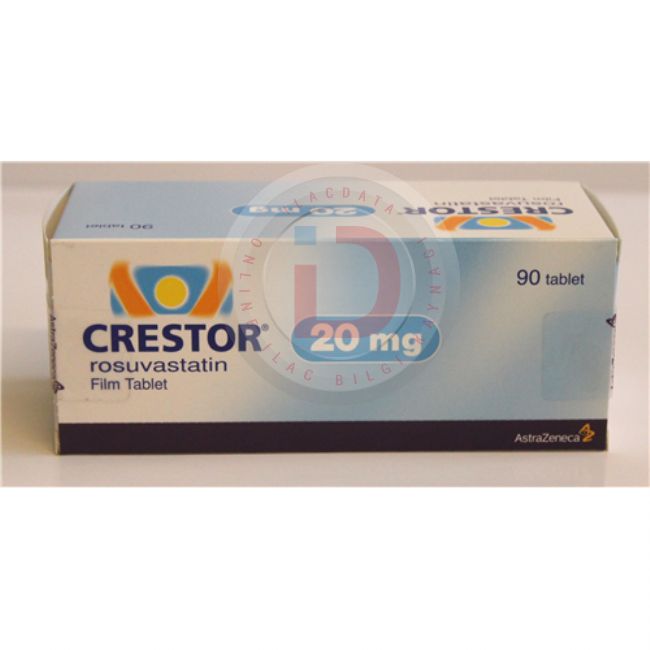 Therefore, the simultaneous use of rosuvastatin and protease inhibitors in the treatment of patients with HIV is not recommended.
Therefore, the simultaneous use of rosuvastatin and protease inhibitors in the treatment of patients with HIV is not recommended.
Antacids
Simultaneous use of Crestor and suspensions of antacids containing aluminum and magnesium hydroxide leads to a decrease in the plasma concentration of rosuvastatin by approximately 50%. This effect is less pronounced if antacids are applied 2 hours after taking rosuvastatin.
Erythromycin
The simultaneous use of Crestor and erythromycin leads to a decrease in AUC (0 – t) of rosuvastatin by 20% and Cmax of rosuvastatin by 30%. Such an interaction may occur as a result of increased intestinal motility caused by the intake of erythromycin.
Oral contraceptives/hormone replacement therapy
Simultaneous use of rosuvastatin and oral contraceptives increases the AUC of ethinyl estradiol and the AUC of norgestril by 26% and 34%, respectively. This increase in plasma concentration should be taken into account when selecting the dose of oral contraceptives. However, this combination was widely used during clinical trials and was well tolerated by patients.
However, this combination was widely used during clinical trials and was well tolerated by patients.
Digoxin
No clinically significant interaction of rosuvastatin with digoxin is expected.
Cytochrome P450 enzymes
Rosuvastatin is neither an inhibitor nor an inducer of cytochrome P450 enzymes. In addition, rosuvastatin is a weak substrate for these enzymes. There was no clinically significant interaction between rosuvastatin, fluconazole (an inhibitor of CYP2C9 and CYP3A4) and ketoconazole (an inhibitor of CYP2A6 CYP3A4). The combined use of Crestor and itraconazole (a CYP3A4 inhibitor) increases the AUC of rosuvastatin by 28%. Thus, no interaction associated with the metabolism of cytochrome P450 is expected.
Precautions
Precautions
For doses less than 40 mg: personal or family history of hereditary muscle disease and previous history of muscle toxicity when using other HMG-CoA reductase inhibitors or fibrates, excessive alcohol consumption, hypothyroidism, race (Asian race), co-administration with fibrates.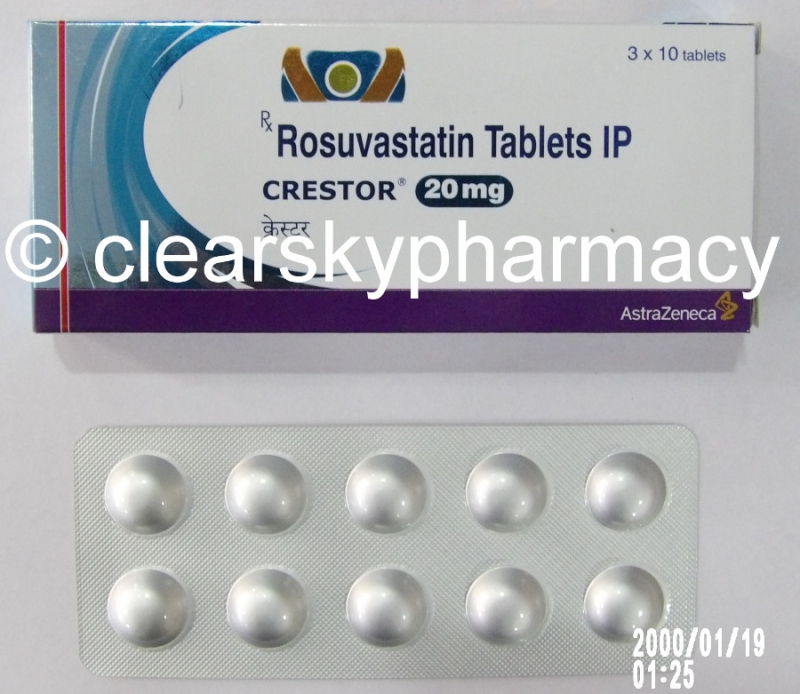
Presence of risk of myopathy/rhabdomyolysis – renal insufficiency, age over 70 years, conditions in which there is an increase in plasma concentration of rosuvastatin, a history of liver disease, sepsis, arterial hypotension, major surgery, trauma, severe metabolic, endocrine or electrolyte disorders, or uncontrolled epilepsy.
Use in pediatric practice
The efficacy and safety of the drug in children under 18 years of age has not been established. If necessary, Crestor is used in a different dosage (5 mg).
From the side of the musculoskeletal system
When using Crestor in all dosages, and especially when taking doses of the drug in excess of 20 mg, the following effects on the musculoskeletal system were reported: myalgia, myopathy, in rare cases, rhabdomyolysis.
Determination of creatine phosphokinase
CPK should not be performed after intense physical exertion or if there are other possible reasons for an increase in CPK, which may lead to an incorrect interpretation of the results. If the initial level of CPK is significantly increased (5 times higher than the upper limit of the norm), after 5–7 days a second measurement should be taken. You should not start therapy if a repeat test confirms the initial level of CPK (more than 5 times higher than the upper limit of normal).
If the initial level of CPK is significantly increased (5 times higher than the upper limit of the norm), after 5–7 days a second measurement should be taken. You should not start therapy if a repeat test confirms the initial level of CPK (more than 5 times higher than the upper limit of normal).
Inform the patient about the need to immediately inform the doctor about cases of sudden onset of muscle pain, muscle weakness or spasms, especially in combination with malaise and fever. In such patients, the level of CPK should be determined. Therapy should be discontinued if the CPK level is significantly increased (more than 5 times the upper limit of normal) or if muscle symptoms are pronounced and cause daily discomfort (even if the CPK level is 5 times lower than the upper limit of normal norms). If symptoms disappear and CPK levels return to normal, consideration should be given to re-prescribing Crestor or other HMG-CoA reductase inhibitors at lower doses with careful monitoring of the patient. Routine monitoring of CPK in the absence of symptoms is not appropriate.
Routine monitoring of CPK in the absence of symptoms is not appropriate.
There have been very rare cases of immune-mediated necrotizing myopathy with clinical manifestations of persistent weakness of the proximal muscles and an increase in serum CK levels during treatment or discontinuation of statins, including rosuvastatin. Additional studies of the muscular and nervous systems, serological studies, as well as immunosuppressive therapy may be required.
No evidence of increased skeletal muscle exposure with Crestor and concomitant therapy. An increase in the incidence of myositis and myopathy has been reported in patients taking other HMG-CoA reductase inhibitors in combination with fibric acid derivatives, including gemfibrozil, cyclosporine, nicotinic acid, azole antifungals, protease inhibitors, and macrolide antibiotics. Gemfibrozil increases the risk of myopathy when co-administered with certain HMG-CoA reductase inhibitors. Thus, the simultaneous appointment of Crestor and gemfibrozil is not recommended. The risk-benefit ratio of Crestor and fibrates or niacin must be carefully weighed.
The risk-benefit ratio of Crestor and fibrates or niacin must be carefully weighed.
2-4 weeks after the start of treatment and / or with an increase in the dose of Crestor, monitoring of lipid metabolism is necessary (if necessary, dose adjustment is required).
Liver
It is recommended that hepatic function tests be performed prior to initiation of therapy and 3 months after initiation of therapy. Reception of Crestor should be discontinued or the dose of the drug should be reduced if the level of transaminase activity in the blood serum is 3 times the upper limit of normal. In patients with hypercholesterolemia due to hypothyroidism or nephrotic syndrome, treatment of underlying diseases should be carried out before starting treatment with Crestor.
Interstitial lung disease
Single cases of interstitial lung disease have been reported with the use of statins, especially when long-term therapy was carried out. Signs described may include shortness of breath, dry cough, and general deterioration (fatigue, weight loss, and fever).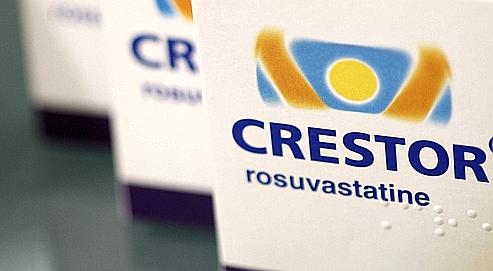 If a patient is suspected of developing interstitial lung disease, statin therapy should be discontinued.
If a patient is suspected of developing interstitial lung disease, statin therapy should be discontinued.
Type II diabetes mellitus
In patients with fasting blood glucose 5.6 – 6.9mmol/l, treatment with rosuvastatin has been associated with an increased risk of diabetes mellitus.
Ethnic groups
In the course of pharmacokinetic studies among Chinese and Japanese patients, an increase in the systemic concentration of rosuvastatin was noted compared with the figures obtained among European patients.
Influence on the ability to drive vehicles and control mechanisms
When driving a car or working with mechanisms, it should be borne in mind that dizziness may occur during therapy.
Overdose
Symptoms – severity of symptoms of side effects.
Treatment is symptomatic and supportive. Monitoring of liver function and CPK levels is necessary. It is unlikely that hemodialysis will be effective.
Release form
14 tablets are placed in a blister pack of a hard silver PVC film and printed lacquered aluminum foil.


 With this medication, the Crestor dose should be limited to 10 mg once per day.
With this medication, the Crestor dose should be limited to 10 mg once per day.